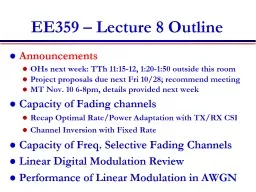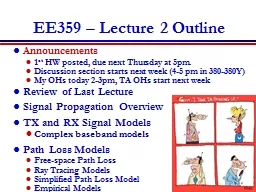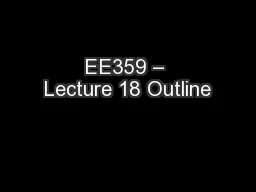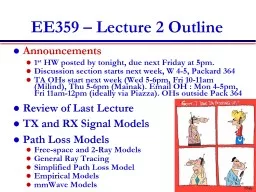PPT-EE359 – Lecture 8 Outline
Author : finestlaxr | Published Date : 2020-08-05
Announcements Schedule changes next week No lecture next Tues 23 Makeup class Wed 25 11301250pm wlunch in Gates B03 Project proposals due 27 I can provide early
Presentation Embed Code
Download Presentation
Download Presentation The PPT/PDF document "EE359 – Lecture 8 Outline" is the property of its rightful owner. Permission is granted to download and print the materials on this website for personal, non-commercial use only, and to display it on your personal computer provided you do not modify the materials and that you retain all copyright notices contained in the materials. By downloading content from our website, you accept the terms of this agreement.
EE359 – Lecture 8 Outline: Transcript
Download Rules Of Document
"EE359 – Lecture 8 Outline"The content belongs to its owner. You may download and print it for personal use, without modification, and keep all copyright notices. By downloading, you agree to these terms.
Related Documents














